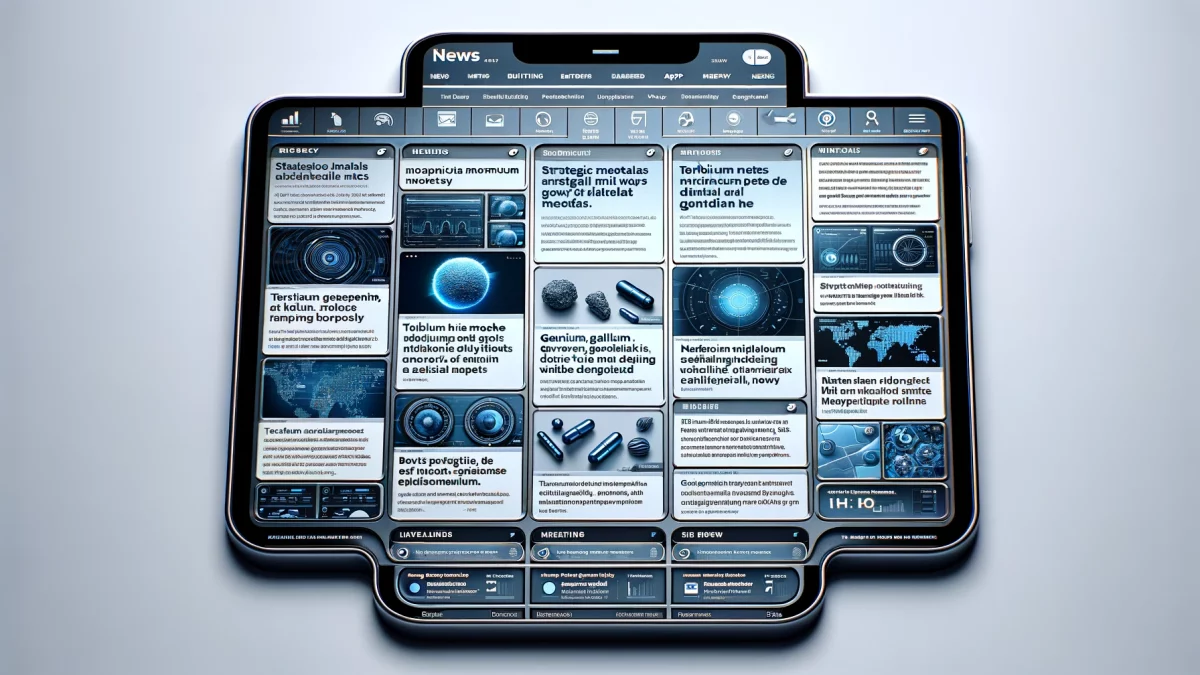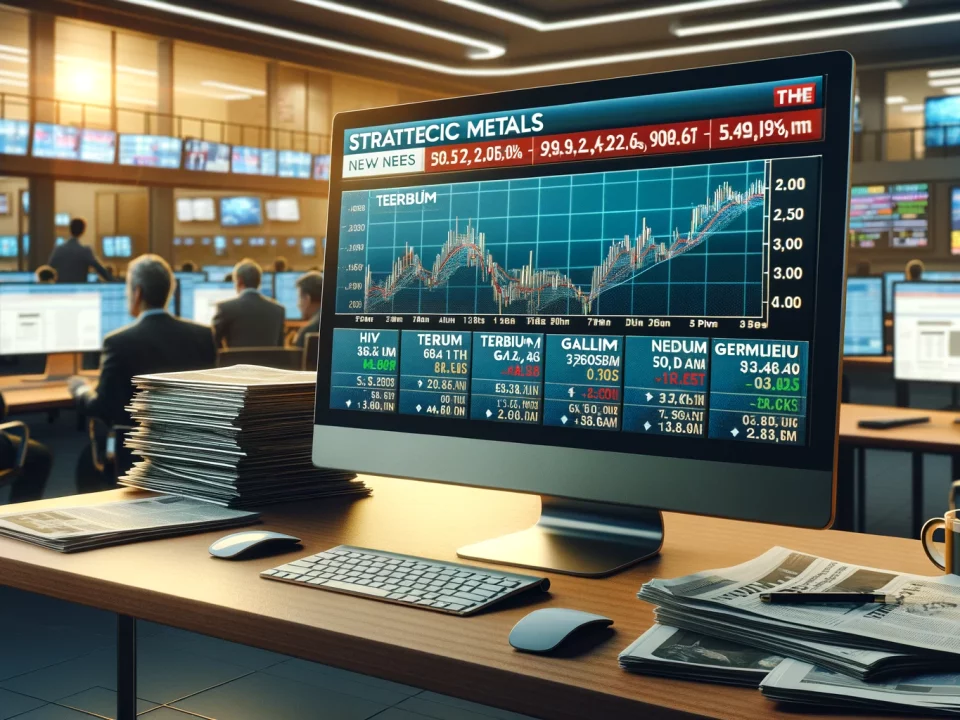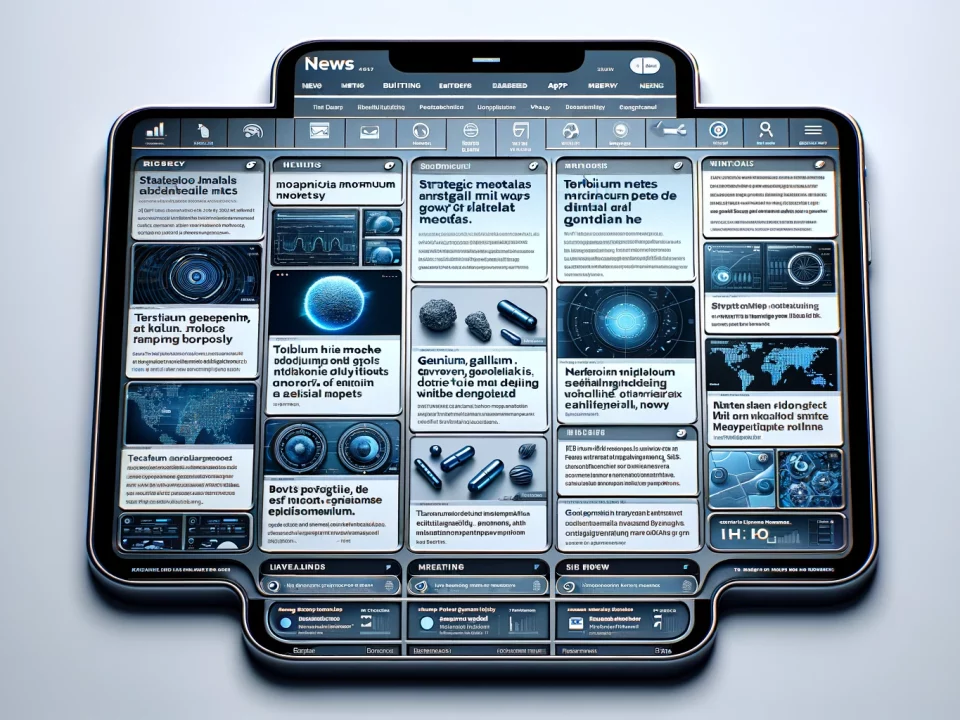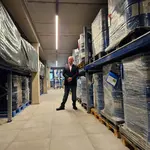
Visitor Tour Recap: Inside Tradium’s Expanded Frankfurt HQ & Vaults
April 29, 2025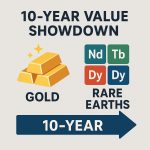
Rare Earths vs. Gold—Which Will Be More Valuable in 10 Years?
May 8, 2025The long-awaited raw materials deal between the U.S. and Ukraine was finalized this week. In other news, Lynas, one of the largest rare earth producers outside China, reported on the past quarter, highlighting headwinds from global trade uncertainties. All this news and more in our weekly round-up –
US AND UKRAINE SIGN LONG AWAITED STRATEGIC METALS DEAL:
In the agreement signed in Washington, Ukraine retains sovereignty over its resources.
The long-anticipated raw materials agreement between the United States and Ukraine, previously stalled for months (we reported), was finalized late Wednesday night. The deal was signed in Washington, D.C., by U.S. Treasury Secretary Scott Bessent and Ukraine’s Deputy Prime Minister Yuliia Svyrydenko. The agreement mostly follows the draft slated initially for signing in late February.
At its core is the creation of a joint reconstruction fund for Ukraine aimed at rebuilding the country following Russia’s ongoing aggression. Under the terms of the deal, Ukraine will contribute 50 percent of future revenues generated from monetizing its state-owned mineral resources, including oil, gas, and related infrastructure such as port facilities, into the fund.
In an initial statement, Svyrydenko emphasized that despite this contribution, Ukraine will retain full sovereignty over its resources and independently determine how they will be developed and used. The U.S. Treasury Department described the agreement as a strong message to Russia, highlighting the Trump administration’s long-term commitment to a peace process centered around a free, sovereign, and prosperous Ukraine.
Although rare earth elements have been frequently mentioned in media reports as a key component of the deal, they are expected to play a minimal role. The U.S.-based think tank Center for Strategic and International Studies (CSIS) noted that reliable data on the economic viability of extracting these materials in Ukraine remains limited. Furthermore, China continues to dominate the global processing and refinement of rare earths.
AUSTRALIA: LYNAS CORP. TO START HEAVY RARE EARTH PRODUCTION SOON –
Australian rare earths miner Lynas reported mixed quarterly results on Monday, citing ongoing global trade volatility as a key headwind for the industry. Despite a 22% increase in sales volumes year-on-year, the company’s sales revenue fell short of analysts’ expectations. In its earnings release, Lynas pointed to a challenging global environment, with recent geopolitical tensions and trade policy changes disrupting the rare earths market. It highlighted that the two-way rare earth material flow between the U.S. and China has effectively stopped because of the implemented trade tariffs.
An Optimistic Note Regarding Heavy Rare Earths:
Despite these challenges, the miner was optimistic about its upcoming production of separated heavy rare earths, a key segment with limited supply chains outside China. Lynas announced that the first production of dysprosium is expected in May, with terbium to follow in June. Especially considering Beijing’s recently imposed export controls on seven heavy rare earths, this marks a significant milestone, as it would position Lynas as the only commercial producer of separated heavy rare earths outside China.
BRAZIL: RARE EARTH PILOT PLANT LAUNCHED –
The facility processes ion-adsorption clays to produce rare earth carbonate. In the future, the material could be refined in a U.S. plant.
Chilean mining company Aclara Resources inaugurated its new rare earth pilot plant in Brazil on Monday, according to a company statement (PDF). Located in Aparecida de Goiânia, central Brazil, the facility produces rare earth carbonate from ion-adsorption clays, a deposit type known for its high concentrations of heavy rare earth elements such as dysprosium and terbium. These elements are critical for improving permanent magnets’ performance and heat resistance in electric vehicles, wind turbines, and other advanced technologies. The company expects to begin full-scale operations at the plant by 2028.
Aclara is advancing two ion-adsorption clay projects in Chile and Brazil, tapping into resources that have only been mined on a large scale in China and Myanmar. The company is also building a rare earth separation facility in the United States to integrate vertical processing from mine to magnet. The plan is to produce carbonate in South America and refine it into individual rare earth elements in North America.
To complete this value chain, Aclara signed a strategic partnership last year with German magnet manufacturer Vacuumschmelze, which is building a magnet production facility in the U.S. A potential supply agreement could establish a mine-to-magnet value chain from South to North America.
EUROPE: CHIP INDUSTRY SET TO MISS TARGETS –
European Court of Auditors cites insufficient investment and limited access to raw materials as major hurdles.
Hardly any modern electronic device or vehicle can function without microchips—from smartphones and washing machines to cars. The supply disruptions during the COVID-19 pandemic made it painfully clear how critical these high-tech components are for the global economy—and how vulnerable the supply chains remain. To boost resilience in this sector, the European Union launched the European Chips Act in early 2022 (we reported). The plan aims to double the EU’s share of global chip production to 20 percent by 2030. However, a new report by the European Court of Auditors reveals that this goal is unlikely to be met. At the current pace, the EU would only reach around 11.7 percent.
The auditors criticize the fact that most of the required investments must come from individual EU countries and private companies. The European Commission contributes significantly less, only about five percent of the roughly €86 billion budget outlined by the Chips Act through 2030. By contrast, leading chipmakers like TSMC, Samsung, and Intel invested a staggering $425 billion between 2020 and 2023. The report also notes that the Commission lacks the authority to effectively coordinate investments across member states.
Raw Material Access and Geopolitical Tensions Threaten Europe’s Chip Ambitions:
In addition to a shortage of skilled labor and high energy costs, the report highlights limited access to critical raw materials as a key risk. The EU remains highly dependent on foreign suppliers, and ongoing geopolitical tensions are further straining supply chains. For example, 95 percent of refined gallium, a key chip ingredient, comes from China. Taiwan is also crucial, as it is home to chip giant TSMC. The conflict between China and Taiwan casts a shadow over the industry’s stability.
While the Chips Act has injected new momentum into Europe’s semiconductor ambitions, the auditors conclude that it urgently needs a reality check. Without significant adjustments, the EU risks falling short in the increasingly competitive global market.
UNITED STATES: SUNLIGHT COULD POWER THE ENERGY TRANSITION AND COMBAT WATER SCARCITY –
A new technology may lower the cost of hydrogen production and offer a potential solution to growing global water shortages.
Using a combination of seawater, metals, and sunlight, researchers in the United States have developed a method to produce cost-effective green hydrogen and clean drinking water. Their innovation could make producing this climate-friendly fuel more efficient while simultaneously addressing the escalating scarcity of freshwater worldwide. And because the system runs on renewable energy, it’s also entirely carbon neutral.
At the heart of this breakthrough is a combination of solar cells, heat recovery, and electrolysis, the most common method of hydrogen production. This process uses electricity to split purified water into hydrogen and oxygen components. When the electricity comes from renewable sources, the resulting product is known as green hydrogen.
However, production costs remain high, partly due to the substantial water requirements. According to a recent Energy and Environmental Science study, producing just one kilogram of hydrogen requires at least nine kilograms of water. As freshwater is becoming increasingly scarce, this raises concerns, explains study lead Dr. Lenan Zhang from Cornell University in New York. His team’s solution: seawater, an abundant and free resource, alongside sunlight.
Electricity and Heat from the Sun: How the Tiny Prototype Works:
To harness sunlight and seawater efficiently, the team developed a compact prototype measuring 10 by 10 centimeters. A built-in silicon-based photovoltaic panel generates the electricity needed for electrolysis. Like conventional solar panels, only some sunlight is converted into electricity; the rest is typically lost as waste heat. However, Zhang explains that this prototype cleverly recycles that heat to evaporate seawater. As the water vaporizes, salt is left behind, and the resulting steam condenses into fresh, clean water, which is then fed into the electrolyzer. Here, precious metals like iridium and platinum are powerful catalysts in hydrogen production.
According to the researchers, the prototype currently produces 200 milliliters of hydrogen per hour. When scaled up, it could generate nearly 36 liters of hydrogen and 1.2 liters of drinking water per square meter per hour.
Over the next 15 years, the researchers estimate their technology could reduce the cost of green hydrogen from the current $10 per kilogram to just $1. In addition, Zhang sees potential for integrating the system into solar parks to produce hydrogen and water and cool down photovoltaic modules, boosting their efficiency and lifespan.
The figure for the week is 790,000, which is the number of people roughly employed globally in extracting critical minerals in 2023.



